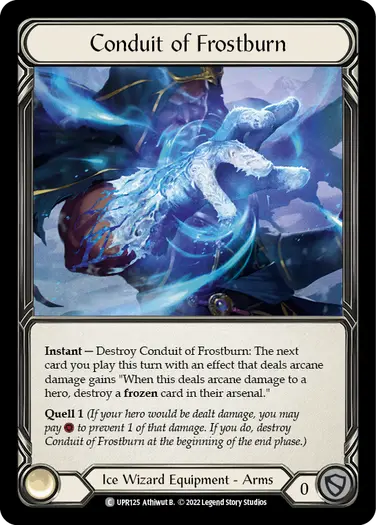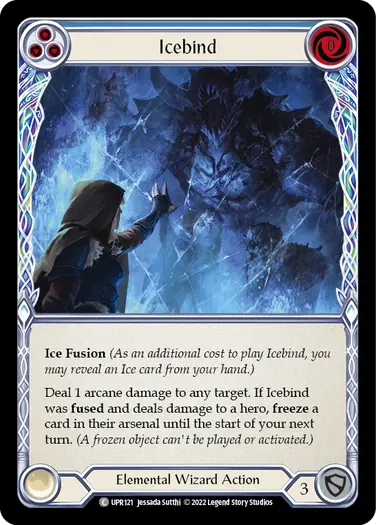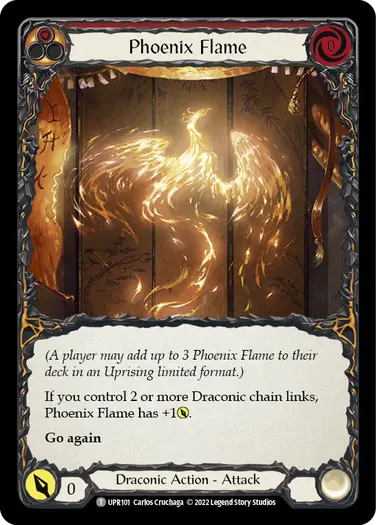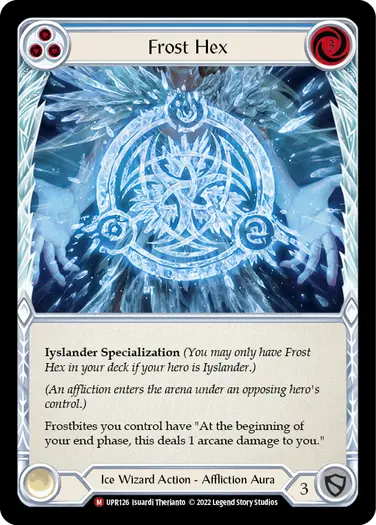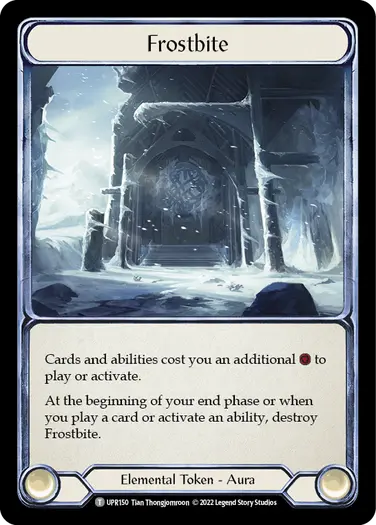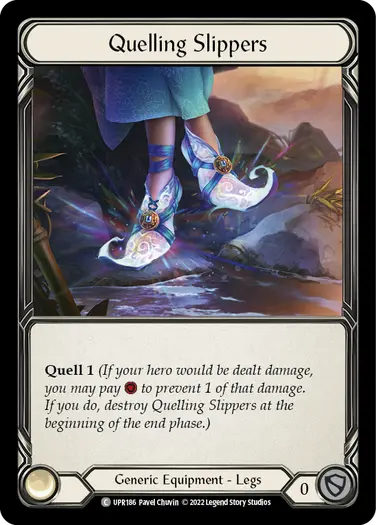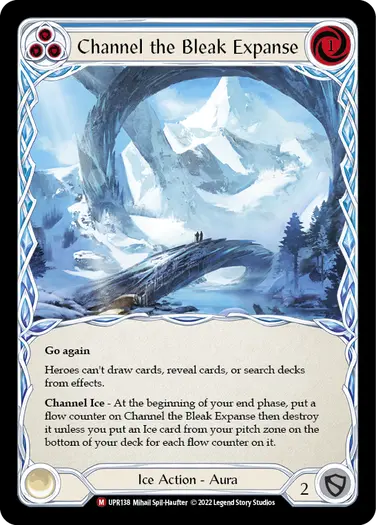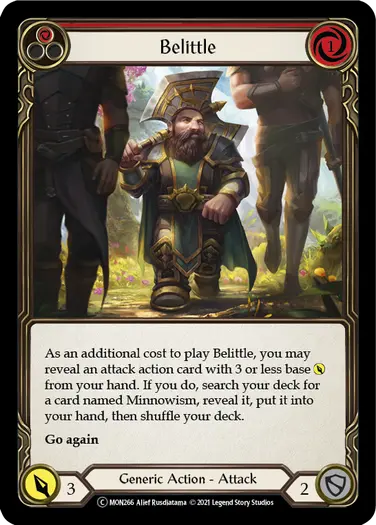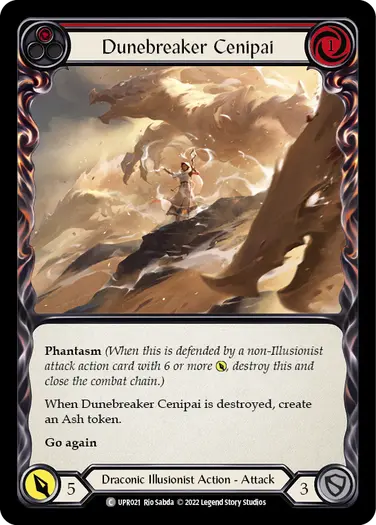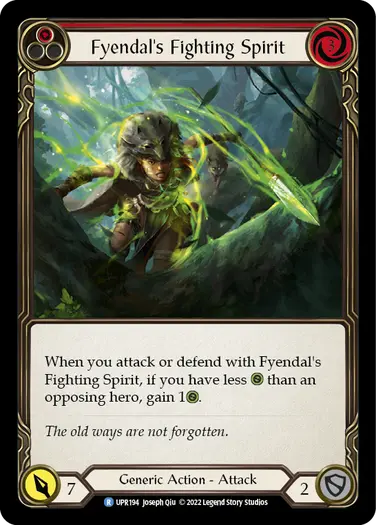With the worldwide release of Uprising (July 1st in the U.S., and June 24th for the rest of the world), Joshua Scott addresses some key rules questions about the upcoming set.
If I activate Conduit of Frostburn, then play Icebind with fusion, can I destroy a card in their arsenal?
Yes. Conduit of Frostburn adds a triggered ability to the next card you play this turn with an effect that deals arcane damage. When this ability is added to an Icebind that is fused and the Icebind deals damage to a hero, the Conduit of Frostburn’s ability triggers but the rest of the Icebind effect is generated first (as part of the resolution of Icebind as a whole). The key here is that all of the effects of the layer must resolve first before we add any additional layers to the stack. Once Icebind has completely resolved, Conduit of Frostburn’s trigger-layer is added to the stack, and can be resolved to destroy the card in the hero’s arsenal that was frozen by Icebind.
Tyler activates and resolves Conduit of Forstburn, then plays and resolves Icebind (blue), targeting Nic and fusing with an ice card. Nic does not prevent any damage. First Icebind deals 1 damage, then because it has dealt damage, Tyler freezes a card in Nic’s arsenal. Finally, when both players pass priority again, the Conduit of Forstburn’s triggered-layer resolves, and Tyler destroys Nic’s frozen arsenal card.
Can I close the combat chain to put Phoenix Flame in the graveyard, then use Fai’s ability to return it to hand?
Yes, but it will cost 3 resources to return it. Typically, closing the combat chain by choice requires both players to pass on an empty stack during the link step of combat (i.e. after a chain-link has resolved). When the combat chain closes the game enters the close step of combat where neither player has priority. The Phoenix Flame will be put into the graveyard, but you do not have priority to activate Fai during this time. When the close step ends and the combat chain is closed, you would not be controlling any chain links and therefore Fai’s ability would not be discounted.
Tyler is playing as Fai and controls three Phoenix Flames on the combat chain. The last chain link has been resolved and both players pass priority to close the combat chain. All three of Tyler’s Phoenix Flames are put into their graveyard, the close step ends and Tyler regains priority. Tyler activates Fai’s ability and must pay {r}{r}{r} because they do not currently control any draconic chain links on the combat chain.
If I use Quell to prevent damage from Frostbite + Frost Hex, is it destroyed at the end of my turn?
No. When Quell is applied as a replacement effect, it generates a delayed-triggered effect that triggers when the beginning of the end phase event occurs. Because the Frost Hex triggered ability on the Frostbite tokens has already triggered (because that’s the damage you’re preventing), that event has already occurred for your turn so Quell’s delayed-triggered effect does not trigger on your turn. However, it WILL trigger during your opponent's turn when the game enters the end phase because the delayed-triggered effect does not specify whose end phase it triggers on.
Tyler controls a Frost Hex, a Frostbite token, and Quelling Slippers. At the beginning of their end phase, the Frostbite triggers and would deal 1 damage to Tyler. Tyler applies Quell and prevents the damage, but because the beginning of their end phase has already passed, Quelling Slippers is not destroyed. Tyler ends their turn and Nic plays out their turn. At the beginning of Nic’s end phase, the triggered effect of Quell is triggered and Tyler’s Quelling Slippers is destroyed.
Do I still discard when I play Sand Sketched Plan and Channel the Bleak Expanse is in the arena?
Yes. Channel the Bleak Expanse prevents events from effects that draw, reveal, or search. This means that whenever you try to draw/reveal/search, you simply fail to do so. Any effect that depends on the result of an effect that fails may also fail, but all other effects continue to resolve as normal. In the case of Sand Sketched Plan, there are four effects for this resolution ability:
- search your deck for a card
- put it into your hand
- discard a random card
- shuffle your deck
The search effect fails because it is canceled by Channel the Bleak Expanse. The put effect fails because it is dependent on the search effect succeeding, so there is nothing to put into your hand. The discard effect succeeds as long as there is a card in your hand, because it is no dependent on any previous effect, just that you have a card in hand to discard. Finally, the shuffle effect succeeds as long as there are one or more cards in your deck to shuffle.
As an additional note, when attempting to pay effect-costs like “fusion”, Channel the Bleak Expanse prevents those costs from being paid and thus prevents the player from playing cards with “reveal” as an additional cost, like Flock of the Feather Walkers.
Nic controls Channel the Bleak Expanse. Tyler plays and resolves Sand Sketched Plan. Tyler is prevented from searching, does not put a card in hand, discards a card, then shuffles their deck.
Tyler plays Belittle, revealing a 3{p} card for its additional cost. Before Belittle’s triggered effect resolves, Nic plays and resolves Channel the Bleak Expanse at instant speed. Both players pass and Belittle triggered effect begins to resolve. Tyler is prevented from searching their deck for a card named Minnowism, does not put any card in hand, then shuffles their deck. The chain link continues to resolve as normal.
If I defend a phantasm attack with Fyendal’s Fighting Spirit, do I gain life?
Yes, even if the combat chain closes due to the phantasm effect. When you defend with Fyendal’s Fighting Spirit, you are considered to have defended, which triggers its effect and creates a triggered layer on the stack. Similarly, if you defend an attack with phantasm with a 6+{p} card, it also triggers and creates a triggered layer on the stack. The turn player (typically the attacking player) gets to order these triggered layers on the stack, but even if they choose to close the combat chain from the phantasm trigger before resolving the Fyendal’s Fighting Spirit trigger, the latter will still resolve as part of the close step of combat.
Note that this is similar to how Runechant triggered effects still resolve when you target a permanent with Spectra with an attack action card. The triggered layers still resolve as part of the close step of combat, rather than just being lost/forgotten when the combat chain closes.
Tyler controls an Aether Ashwing, with an Ash token underneath, and is on a higher life total than Nic. Tyler attacks Nic with the Aether Ashwing and Nic defends with Fyendal’s Fighting Spirit (red). Both Phantasm and Fyendal’s Fighting Spirit trigger, and Tyler decides to resolve the Phantasm triggered effect first. The game moves to the close step of combat, and as part of the step, all other layers remaining on the stack begin to resolve without players having priority. Fyendal’s Fighting Spirit’s triggered effect resolves and Nic gains 1{h}.
